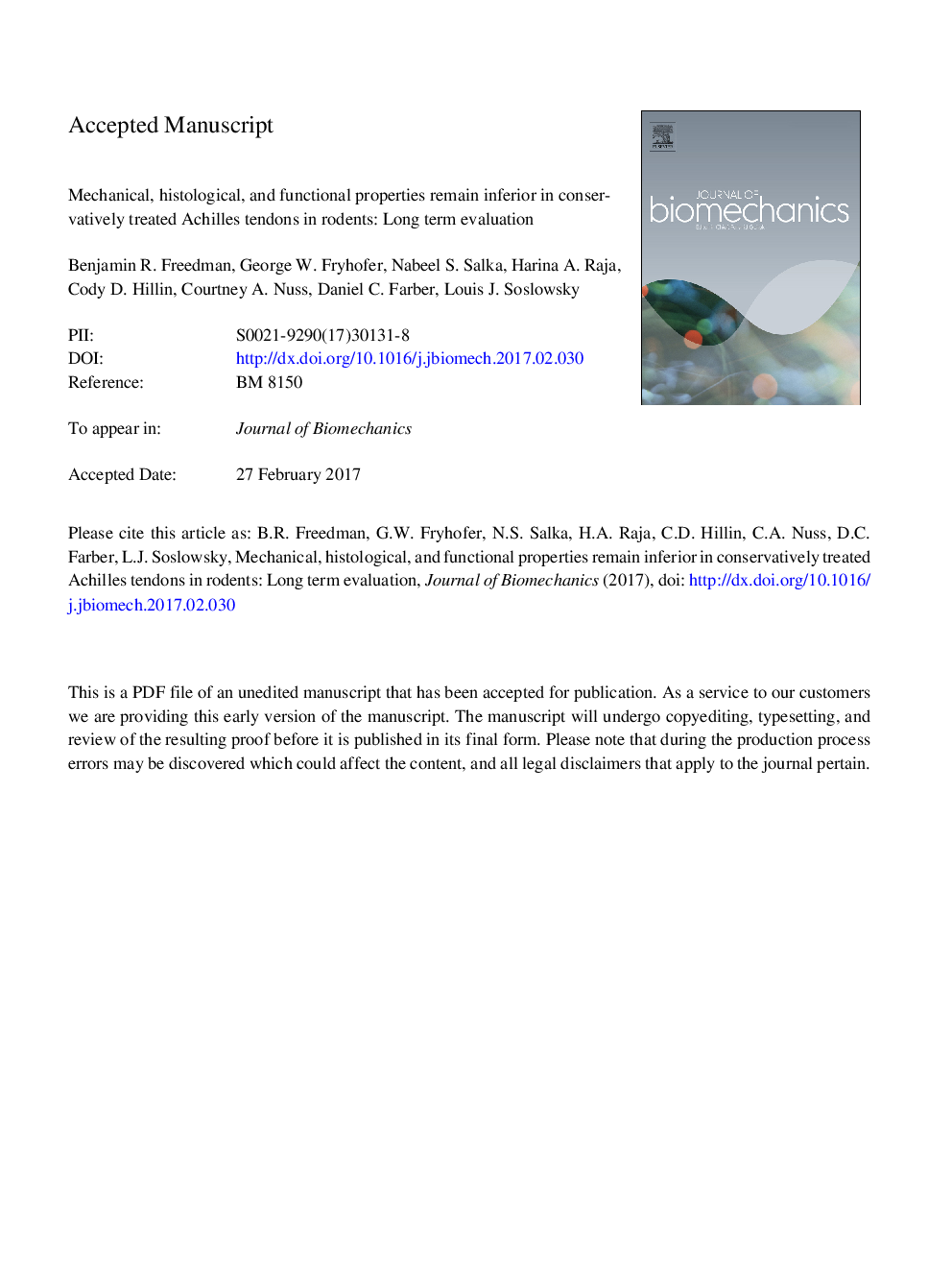| Article ID | Journal | Published Year | Pages | File Type |
|---|---|---|---|---|
| 5032057 | Journal of Biomechanics | 2017 | 22 Pages |
Abstract
Conservative treatment (non-operative) of Achilles tendon ruptures is suggested to produce equivalent capacity for return to function; however, long term results and the role of return to activity (RTA) for this treatment paradigm remain unclear. Therefore, the objective of this study was to evaluate the long term response of conservatively treated Achilles tendons in rodents with varied RTA. Sprague Dawley rats (n = 32) received unilateral blunt transection of the Achilles tendon followed by randomization into groups that returned to activity after 1-week (RTA1) or 3-weeks (RTA3) of limb casting in plantarflexion, before being euthanized at 16-weeks post-injury. Uninjured age-matched control animals were used as a control group (n = 10). Limb function, passive joint mechanics, tendon properties (mechanical, histological), and muscle properties (histological, immunohistochemical) were evaluated. Results showed that although hindlimb ground reaction forces and range of motion returned to baseline levels by 16-weeks post-injury regardless of RTA, ankle joint stiffness remained altered. RTA1 and RTA3 groups both exhibited no differences in fatigue properties; however, the secant modulus, hysteresis, and laxity were inferior compared to uninjured age-matched control tendons. Despite these changes, tendons 16-weeks post-injury achieved secant stiffness levels of uninjured tendons. RTA1 and RTA3 groups had no differences in histological properties, but had higher cell numbers compared to control tendons. No changes in gastrocnemius fiber size or type in the superficial or deep regions were detected, except for type 2x fiber fraction. Together, this work highlights RTA-dependent deficits in limb function and tissue-level properties in long-term Achilles tendon and muscle healing.
Related Topics
Physical Sciences and Engineering
Engineering
Biomedical Engineering
Authors
Benjamin R. Freedman, George W. Fryhofer, Nabeel S. Salka, Harina A. Raja, Cody D. Hillin, Courtney A. Nuss, Daniel C. Farber, Louis J. Soslowsky,
